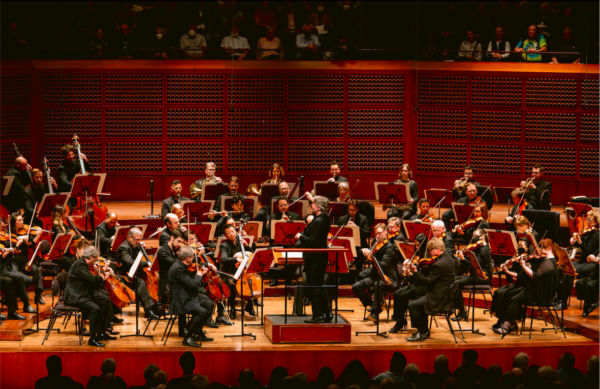 United Kingdom Beethoven: Igor Levit (piano), San Francisco Symphony / Esa-Pekka Salonen (conductor). Davies Symphony Hall, San Francisco, 15.6.2023. (HS)
United Kingdom Beethoven: Igor Levit (piano), San Francisco Symphony / Esa-Pekka Salonen (conductor). Davies Symphony Hall, San Francisco, 15.6.2023. (HS)

Beethoven – Piano Concerto No.5 in E-flat major ‘Emperor’, Symphony No.3 in E-flat major ‘Eroica’
Esa-Pekka Salonen has not conducted much Beethoven during his three-year tenure as music director of the San Francisco Symphony. The most recent, in my recollection, was a startlingly dramatic and expressive Creature of Prometheus (the full ballet), and that was more than a year ago.
Salonen certainly can deliver a wide range of music with his signature thoughtfulness and drama, including last week’s haunting and emotionally on-point performance of the late Kaija Saariaho’s opera Adriana Mater. Now after his dazzlingly cogent and superbly shaped performance of the ‘Eroica’ Symphony, let’s hope we get more Beethoven.
The double-wham of the first two chords, sharp and pungent, got the opening movement going at a pace just brisk enough to keep things moving, but sensitively sculpted with subtle dynamics and just enough of a breath between phrases to feel human. This was masterful control and seemed utterly spontaneous, a characteristic that played out brilliantly and consistently over the symphony’s 40 minutes.
While built on traditional Classical Era lines – Allegro first, then a slow movement, a jolly Scherzo and a wrap-it-up finale – the symphony marked Beethoven’s first foray into outsizing the format. Longer than most of Haydn’s and Mozart’s symphonies, the development sections more expansive, the symphony introduces more of the composer’s innovations, even in the orchestration. Doubling the traditional French horn component to four musicians paid dividends in the triumphant moments (which the section executed with élan).
Salonen’s subtle, rhythmically supple approach made repeats and variations into a sonic kaleidoscope, like showing off facets of a jewel. In the opening movement, each turn around a corner revealed a slightly different feeling, as if surprised at what came next. That is a key factor in making things feel fresh, even better when, as in this case, it is not immediately obvious.
Just when the steady tread of the second movement’s funeral march threatened to wear out a welcome, Salonen infused the C-major interlude with a sense of cool, fresh air before it rose to the first of many triumphant brass moments. The fugue section found an ideal balance too, neither matter-of-fact nor too seriously contrapuntal.
The Scherzo bounced along merrily, rhythmically robust and marked by puckish, pianissimo, pizzicato commentary from the strings. The finale quotes melodic material from the composer’s Prometheus (an apt callback to last year’s performance). The musical elements gradually consolidated, one variation growing organically from the previous, into a massive finish.
Besides the horn section, a most fascinating aspect was the work of timpanist Edward Stephan, whose timing and choice of mallets (one pair so tiny they almost seemed imaginary, resulting in a particularly crisp sound) produced an endless array of timbres.
The concert’s opening work, Beethoven’s Piano Concerto No.5, benefited from similar orchestral virtuosity, but something was amiss when the soloist’s rendering of the familiar themes was less compelling than the orchestra’s.
This was the first appearance by the much-awarded, Russian-born German pianist Igor Levit, in town for a two-week, four-concert residency, fulfilling his position as one of the orchestra’s eight ‘collaborative partners’. Still to come are a solo recital, a chamber music program and three performances of Busoni’s seldom heard 75-minute concerto for piano, orchestra and chorus.
This heavy workload may account for some puzzling shortcomings in the Beethoven concerto. The pianist’s well thought-out and charmingly deft work in the quieter sections of the score unfolded like silk, and his interplay with the orchestra found moments of magic. But the bigger, louder gestures sounded muddy. The more rapid torrents began and landed with vigor, but all the notes in between lacked distinctness. Even the big gesture at the beginning of the finale, one of the treasures of this score, landed way too softly.
For an encore, Levit chose the Adagio Cantabile from Beethoven’s ‘Pathétique’ Sonata. At a much faster-than-usual pace, it sounded more like a serenade than a noble statement, lovely as the passage work was.
Harvey Steiman
